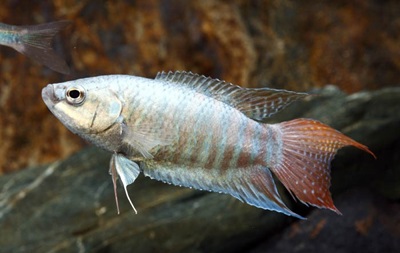
SKU: H780
Paradise Fish Care Tips
In Stock
Out of Stock
Temporarily Out of Stock
Discontinued
Special Order
Price:
Product Details
Paradise Fish (Macrofodus opercularis)
Paradise fish were one of the first fish available to fish keepers in the mid to late 1800s. They offer beautiful color and personality, but due to their semi-aggressive temperament, care must be taken when building a tank around them. They are available in a variety of colors. These fish grow to be between 5-6 inches in size.
Labyrinth Organ: Paradise fish belong in the classical order if Anabantiformes, which includes Bettas and Gouramis. Fish in this order contain a Labyrinth organ. This allows them to take in oxygen directly from the air, rather than from the water and their gills like other fish.
Housing: Paradise fish are very hardy, and can tolerate a wide range of temperatures. Because of this, a heater for a tank with these fish is optional. Some have even housed paradise fish in small water gardens/ponds where they will happily eat mosquito larvae and other insects. But be sure to bring them inside for the winter, as they can not winter over. Provide this fish with a heavily planted tank, with driftwood and rocks to provide hiding spots. Having low flow is preferred, as these fish are native to slow moving streams. Like Bettas, these fish can be very territorial, housing them alone is a great option. Since they do reach 5-6 inches in size, a minimum tank size of 6 gallons or larger would be optimal.
Paradise Fish In Groups: If choosing to keep a group of paradise fish, you would want the minimum size of the group to be 5. Keeping a group of 5 or more helps to cut down on aggression by allowing them to work out a social hierarchy within that larger group. The tank will need to be heavily planted, with tall plants in the back and shorter ones towards the front. Providing driftwood and rockwork for additional hiding places is optimal.
Tank Conditions:
Temperature: 50-78F. pH: 6.0-7.6
Feeding: Feed once to twice a day. A great flake food option would be the Fluval Bug Bites Tropical Flake Recipe. Frozen food options would include Brine Shrimp, Mysis Shrimp, Blood Worms and Daphnia.
Tank Mates: As mentioned before, paradise fish are a temperamental and territorial fish, so keeping them within a community of other fish can sometimes be tricky, but if chosen thoughtfully, a paradise fish can happily live amongst other fish.
Tetras: Larger, active tetra species are the best choice. Buenos Aires Tetras, Columbian Redfin Tetras, Hockey Stick/Penguin Tetras, Serpae Tetras.
Barbs: Tiger Barbs, Black Ruby Barb, Rosy Barb, Denison Barb/Roseline Shark (Keep in mind, these are schooling fish that grow to be about 6-8 inches, so making sure you have a large enough tank to support a group is important).
Cichlids: Convict Cichlids, Texas Cichlids, Synspillum Cichlids, Checkerboard Cichlids, Festivum Cichlids, Dwarf Pike Cichlids
Catfish: Any Corydoras species, Plecostomus, or Synodontis. (Paradise fish are primarily top dwellers, and shouldn't pay much mind to bottom dwellers.)
Others: Polypterus, Eels. (stay away from spiney eels are they are smaller and may be subject to bullying by the paradise fish.)
Paradise fish were one of the first fish available to fish keepers in the mid to late 1800s. They offer beautiful color and personality, but due to their semi-aggressive temperament, care must be taken when building a tank around them. They are available in a variety of colors. These fish grow to be between 5-6 inches in size.
Labyrinth Organ: Paradise fish belong in the classical order if Anabantiformes, which includes Bettas and Gouramis. Fish in this order contain a Labyrinth organ. This allows them to take in oxygen directly from the air, rather than from the water and their gills like other fish.
Housing: Paradise fish are very hardy, and can tolerate a wide range of temperatures. Because of this, a heater for a tank with these fish is optional. Some have even housed paradise fish in small water gardens/ponds where they will happily eat mosquito larvae and other insects. But be sure to bring them inside for the winter, as they can not winter over. Provide this fish with a heavily planted tank, with driftwood and rocks to provide hiding spots. Having low flow is preferred, as these fish are native to slow moving streams. Like Bettas, these fish can be very territorial, housing them alone is a great option. Since they do reach 5-6 inches in size, a minimum tank size of 6 gallons or larger would be optimal.
Paradise Fish In Groups: If choosing to keep a group of paradise fish, you would want the minimum size of the group to be 5. Keeping a group of 5 or more helps to cut down on aggression by allowing them to work out a social hierarchy within that larger group. The tank will need to be heavily planted, with tall plants in the back and shorter ones towards the front. Providing driftwood and rockwork for additional hiding places is optimal.
Tank Conditions:
Temperature: 50-78F. pH: 6.0-7.6
Feeding: Feed once to twice a day. A great flake food option would be the Fluval Bug Bites Tropical Flake Recipe. Frozen food options would include Brine Shrimp, Mysis Shrimp, Blood Worms and Daphnia.
Tank Mates: As mentioned before, paradise fish are a temperamental and territorial fish, so keeping them within a community of other fish can sometimes be tricky, but if chosen thoughtfully, a paradise fish can happily live amongst other fish.
Tetras: Larger, active tetra species are the best choice. Buenos Aires Tetras, Columbian Redfin Tetras, Hockey Stick/Penguin Tetras, Serpae Tetras.
Barbs: Tiger Barbs, Black Ruby Barb, Rosy Barb, Denison Barb/Roseline Shark (Keep in mind, these are schooling fish that grow to be about 6-8 inches, so making sure you have a large enough tank to support a group is important).
Cichlids: Convict Cichlids, Texas Cichlids, Synspillum Cichlids, Checkerboard Cichlids, Festivum Cichlids, Dwarf Pike Cichlids
Catfish: Any Corydoras species, Plecostomus, or Synodontis. (Paradise fish are primarily top dwellers, and shouldn't pay much mind to bottom dwellers.)
Others: Polypterus, Eels. (stay away from spiney eels are they are smaller and may be subject to bullying by the paradise fish.)
| Product PDF: | |
|---|---|
| Extra Details: |
Related Items:
| Item | Description | Quantity | Price | ||
| 807 |  |
Black Paradise Fish | in stock | $17.99 | |
| 808 |  |
Blue Paradise Fish | in stock | $5.99 | |
| 144 |  |
Serpae Tetra | in stock | $3.99 | |
| 984 | 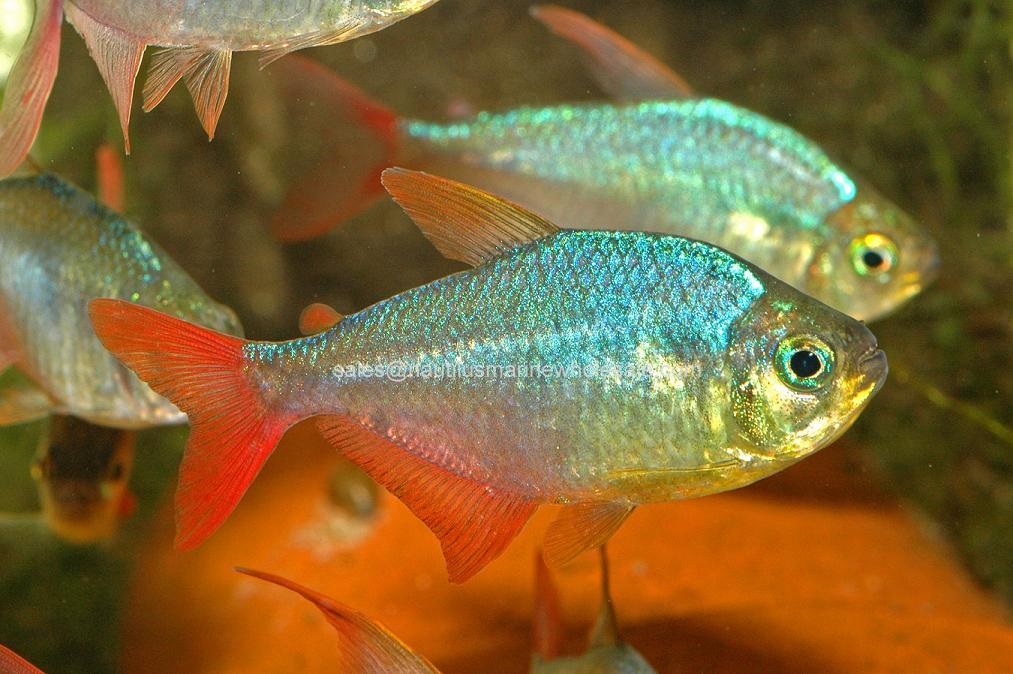 |
Red & Blue Colombian Tetra | in stock | $2.99 | |
| 823 | 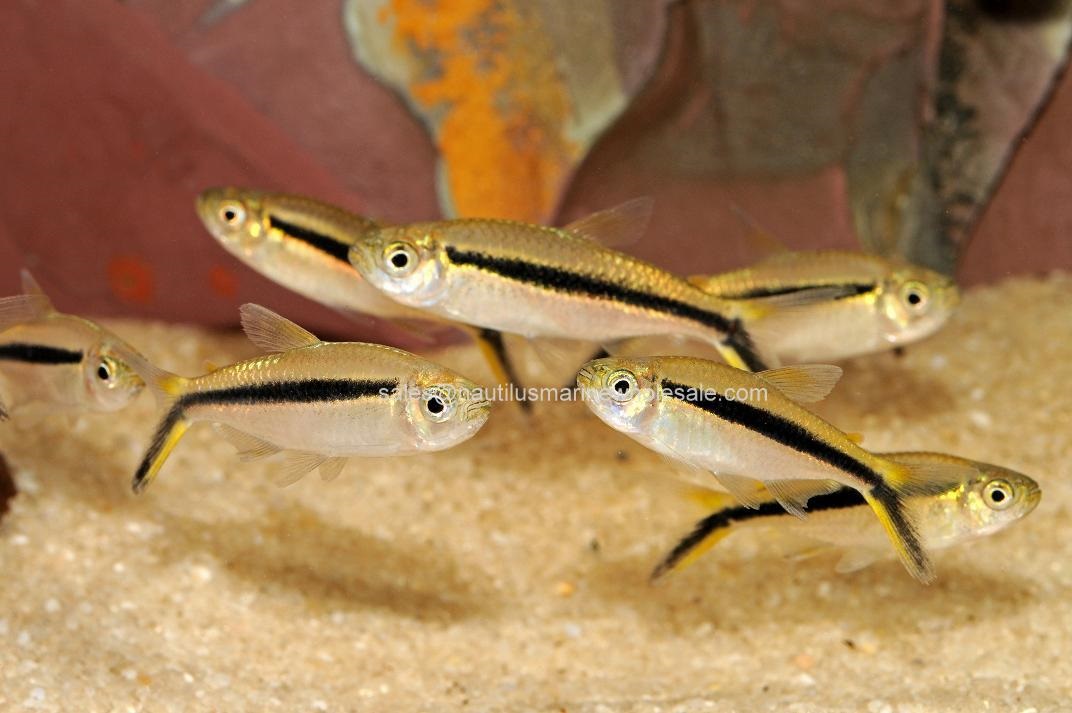 |
Penguin "Hockeystick" Tetra | in stock | $3.99 | |
| 149 |  |
Tiger Barb | in stock | $3.99 | |
| 141 |  |
Green Tiger Barb | in stock | $5.99 | |
| 150 | 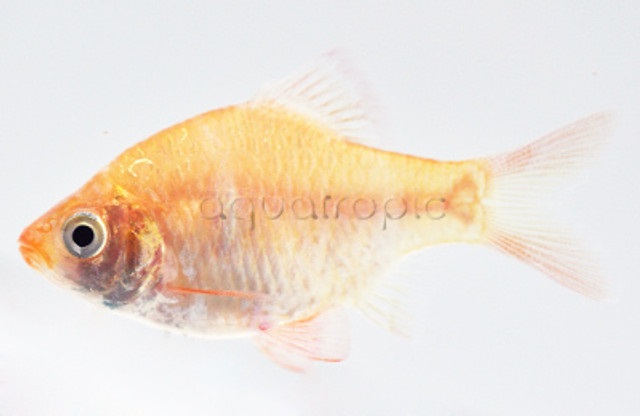 |
Albino Tiger Barb | in stock | $3.99 | |
| 1629 |  |
Platinum Green Tiger Barb | in stock | $12.99 | |
| 133 | 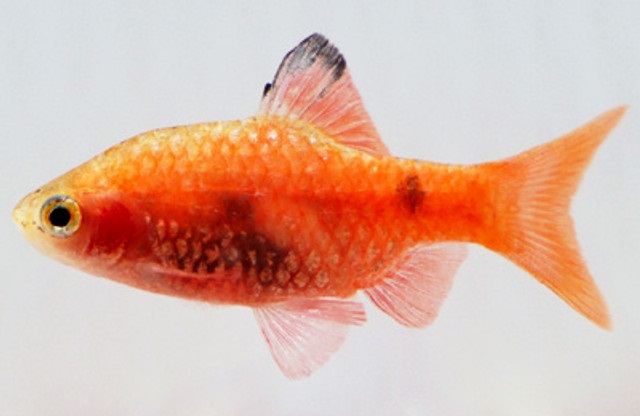 |
Red Glass Rosy Barb | in stock | $4.99 | |
| 135 |  |
Black Ruby Barb | in stock | $3.99 | |
| 1620 | 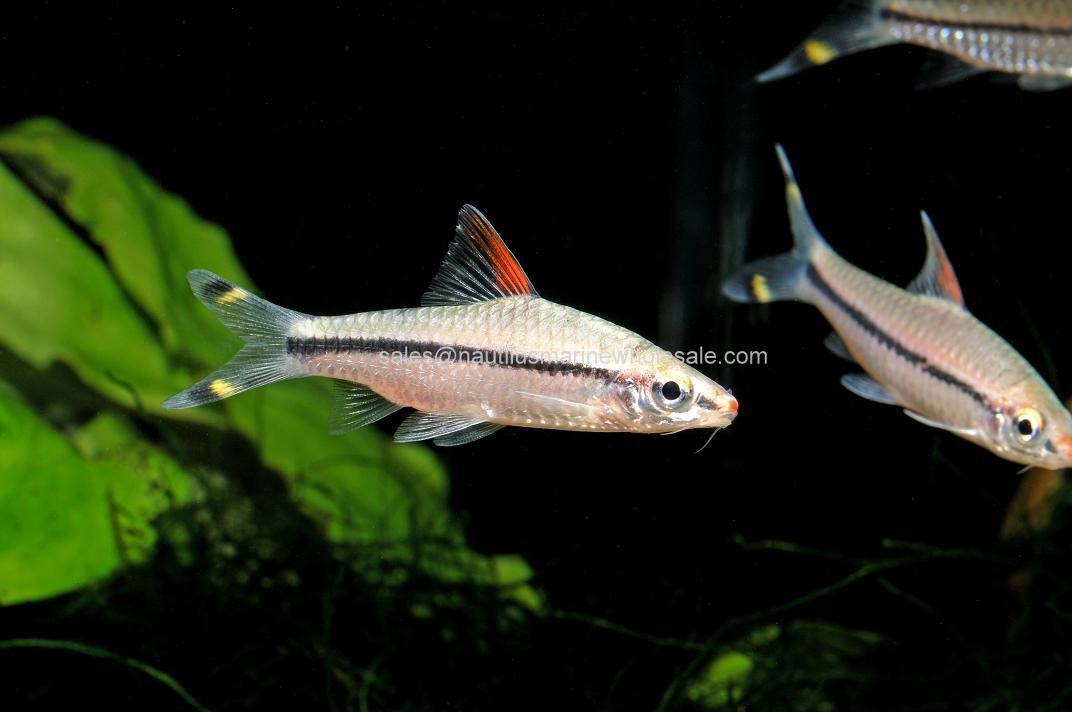 |
Roseline Shark | in stock | $19.99 | |
| 340 |  |
Striped Convict Cichlid | in stock | $3.99 | |
| 482 |  |
Synspilum Cichlid | in stock | $11.99 | |
| 486 |  |
Texas Cichlid | out of stock | $5.99 | |
| 362 |  |
Festivum Cichlid (Flag Cichlid) | in stock | $17.99 | |
| 220 |  |
Paleatus Cory Catfish | in stock | $3.99 | |
| 221 |  |
Panda Cory Catfish | in stock | $6.99 | |
| 212 |  |
Albino Cory Catfish | in stock | $3.99 | |
| 5730 |  |
Green Cory Catfish | in stock | $3.99 | |
| 226 |  |
Sterbai Corydoras | in stock | $14.99 | |
| 219 |  |
Julii Corydoras Cat | in stock | $9.99 | |
| 224 |  |
Skunk (Arcuatus) Corydoras Cat | in stock | $15.99 | |
| 251 |  |
Bristlenose Plecostomus Cat | in stock | $8.99 | |
| 248 |  |
Plecostomus Cat , small | out of stock | $4.99 | |
| 1609 |  |
Albino Bristlenose Pleco Cat | in stock | $11.99 | |
| 257 |  |
Gold Nugget Pleco Cat L018 | in stock | $127.99 | |
| 1060 | 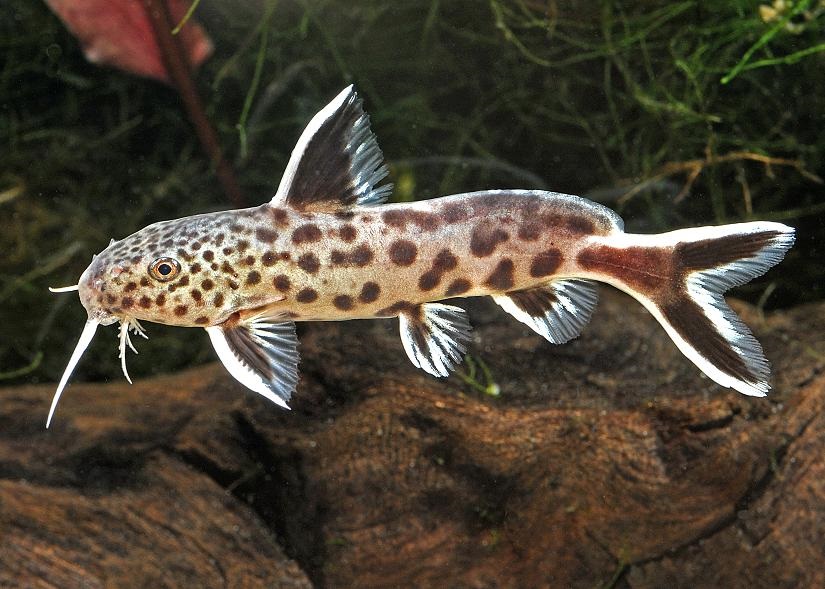 |
Synodontis Petricola Cat | out of stock | $19.99 | |
| 284 |  |
Synodontis Multipunctatus Cat | out of stock | $22.99 | |
| 4169 | 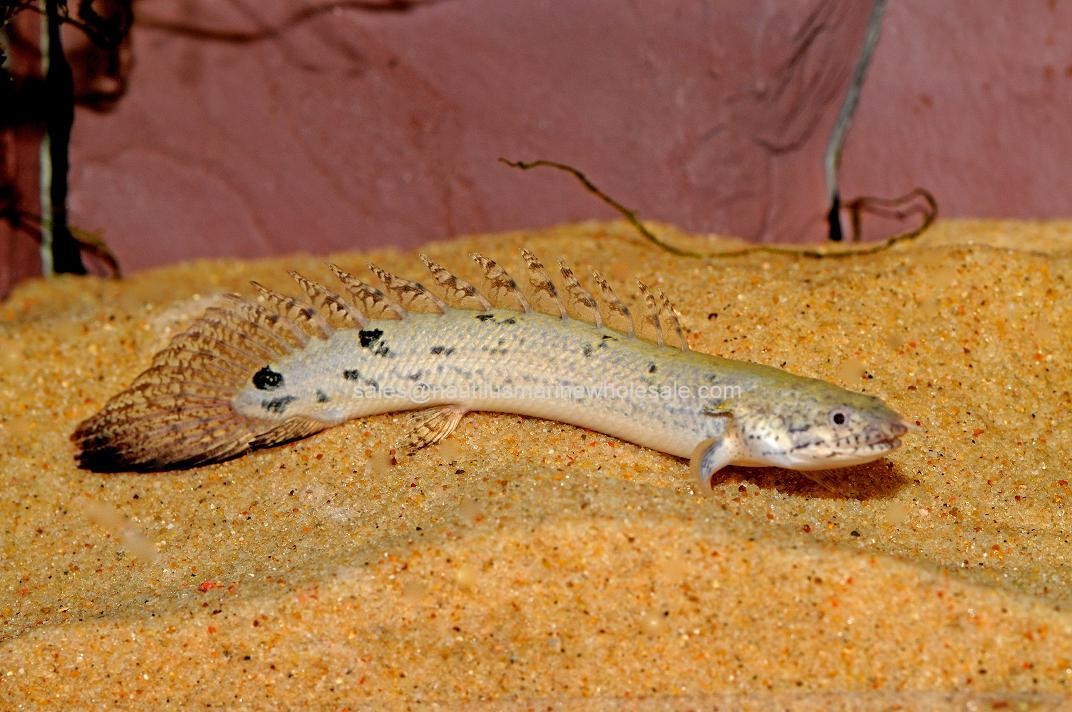 |
Polypterus (Bichir) | out of stock | $14.99 | |
| 2709 |  |
Endlicheri (Bichar) Polypterus | out of stock | $35.99 | |
| 6589 |  |
Albino Bicher Polypterus | out of stock | $13.99 | |
| 544 |  |
Fire Eel - small | out of stock | $59.99 |

